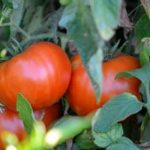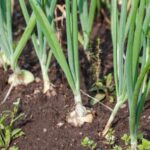Container gardening with flowers and vegetables offers a creative and practical solution for individuals with limited outdoor space. This form of gardening allows people to cultivate beautiful blooms and fresh produce in containers such as pots, planters, and baskets.
Whether you have a small balcony, patio, or even just a windowsill, container gardening provides an opportunity to bring the joys of gardening into your home. In this article, we will explore the concept of container gardening and its many benefits for growing flowers and vegetables in confined spaces.
One of the primary advantages of container gardening is the ability to customize and control the growing environment for each plant. By selecting the right containers, gardeners can cater to the specific needs of different flowers and vegetables, ensuring optimal growth and productivity. Additionally, container gardening allows for easy mobility, making it possible to rearrange plants based on sunlight exposure or simply to change up the aesthetic appeal of your outdoor space.
In this comprehensive guide, we will delve into various aspects of container gardening with a focus on flowers and vegetables. From choosing the right containers and location to planting tips and maintenance advice, we aim to provide valuable insights that will empower both novice and experienced gardeners to create stunning container gardens filled with vibrant blossoms and lush produce.
Whether you are looking to enhance your urban living environment or simply seeking a new hobby, container gardening offers endless possibilities for cultivating beauty and sustenance in compact spaces.
Choosing the Right Containers
When it comes to container gardening with flowers and vegetables, selecting the right containers is crucial for the health and success of your plants. Here are some tips on choosing the appropriate containers for different types of flowers and vegetables, taking into consideration factors such as size, material, and drainage:
1. Size: The size of the container is important for the proper growth of your plants. Larger containers provide more space for root development and water retention. Consider the mature size of the plants you intend to grow and choose containers that will accommodate their needs.
2. Material: Containers come in various materials, including terracotta, plastic, wood, and metal. Each material has its pros and cons in terms of aesthetics, insulation, and durability. For example, terracotta pots are breathable but can dry out quickly, while plastic pots retain moisture but may not be as visually appealing.
3. Drainage: Proper drainage is essential to prevent waterlogging, which can lead to root rot and other issues. Look for containers with drainage holes at the bottom to ensure excess water can escape. If your chosen container does not have drainage holes, you can create them yourself using a drill or hammer and nail.
By considering these factors when selecting containers for your container garden with flowers and vegetables, you can create an optimal environment for your plants to thrive. Whether you opt for traditional clay pots or innovative self-watering planters, choosing the right containers is a critical step in successful container gardening.
Selecting the Ideal Location
Selecting the right location for your container garden is crucial for the success of your plants. Factors such as sunlight, temperature, and accessibility play a significant role in ensuring that your flowers and vegetables thrive in their containers. Here are some key considerations to keep in mind when choosing the ideal location for your container garden.
Sunlight Exposure
One of the most important factors to consider when selecting a location for your container garden is sunlight exposure. Most flowers and vegetables require at least 6 hours of direct sunlight daily to grow and flourish.
It’s essential to observe the sun patterns in your outdoor space to determine the best spots for your containers. South-facing areas generally receive the most sunlight, making them ideal for sun-loving plants, while east or west-facing locations may offer partial shade, suitable for plants that prefer less intense sunlight.
Temperature and Climate
Consider the climate and temperature fluctuations in your area when deciding on a location for your container garden. Some plants are more sensitive to extreme heat or cold, so it’s important to choose a spot that provides adequate protection from harsh weather conditions. Additionally, certain vegetables may require specific temperature ranges to thrive, so be mindful of these requirements when selecting the ideal location.
Accessibility and Convenience
Another important aspect to consider is accessibility. Choose a location for your container garden that is easily accessible for watering, maintenance, and harvesting. If possible, place containers near a water source to simplify watering tasks. Accessibility also includes ensuring that your container garden does not obstruct walkways or create obstacles in your outdoor space.
By carefully considering these factors when selecting the ideal location for your container garden with flowers and vegetables, you can create an optimal environment for healthy plant growth and maximize the beauty and productivity of your container garden.
Best Flowers for Container Gardening
When it comes to container gardening with flowers and vegetables, selecting the right plants is crucial for a successful and visually appealing garden. When choosing flowers for your containers, it’s essential to consider their size, growth habits, and maintenance requirements. Low-maintenance options like petunias, marigolds, and impatiens are popular choices that offer colorful blooms without requiring a lot of attention.
Another great option for container gardening is ornamental grasses, which add texture and visual interest to your garden. Grasses like fountain grass or Japanese bloodgrass are not only low-maintenance but also provide movement and a sense of elegance to your container arrangements.
Additionally, herbs such as lavender, rosemary, and chives can be both beautiful and functional in container gardens. Not only do they produce fragrant blooms, but they also serve as natural pest repellents and can be used in cooking.
In terms of color variety, consider combining different types of flowers in one container to create a vibrant display. For example, pairing colorful petunias with cascading million bells or adding bright geraniums alongside trailing lobelia can create eye-catching combinations that will flourish together in the same container.
| Flower Type | Special Characteristics |
|---|---|
| Petunias | Colorful blooms; low-maintenance |
| Impatiens | Bright blooms; shade-tolerant |
| Lavender | Fragrant blooms; natural pest repellent |
Best Vegetables for Container Gardening
When it comes to container gardening with flowers and vegetables, selecting the right vegetables that are well-suited for confined spaces is crucial for a successful harvest. Whether you have a small balcony, patio, or limited yard space, growing vegetables in containers can be both practical and rewarding. Here is a comprehensive list of vegetables that thrive in container gardens, emphasizing varieties that are space-efficient and produce high yields:
- Tomatoes: Compact determinate varieties such as Patio Princess and Tiny Tim are ideal for small containers. They produce an abundance of cherry tomatoes and can be grown in hanging baskets or pots.
- Peppers: Bell peppers and chili peppers can flourish in containers. Look for compact pepper varieties like Lunchbox Mix or Red Rocket that are well-suited for small spaces.
- Lettuce: Leafy greens like lettuce are perfect for container gardening. Opt for loose-leaf varieties such as Buttercrunch or Red Sails that don’t require a lot of space to thrive.
- Radishes: These fast-growing root vegetables are excellent for container gardening. Varieties like Cherry Belle and French Breakfast radishes mature quickly and can be harvested within a few weeks.
In addition to these vegetable options, other suitable choices include carrots, cucumbers, beans, and dwarf varieties of squash or eggplant. When selecting vegetables for your container garden, consider the mature size of the plants as well as their growing habits to ensure they will thrive in a confined space.
To ensure success with your container vegetable garden, it’s important to provide proper care including regular watering, adequate sunlight, and appropriate fertilization. By choosing space-efficient vegetable varieties and providing optimal growing conditions, you can enjoy a bountiful harvest even in limited outdoor spaces. Container gardening with vegetables offers endless possibilities for homegrown produce regardless of available land area.
Planting and Maintenance Tips
When planting flowers in containers for your container gardening with flowers and vegetables, it is important to consider the specific needs of each type of flower. Begin by choosing high-quality potting mix designed for containers, as this will provide essential nutrients and proper drainage for the plants.
When choosing the flowers for your containers, opt for a variety of colors, sizes, and textures to create an appealing visual display. It is also advisable to consider the height and growth habit of each flower, ensuring that taller plants are placed towards the center or back of the container, while trailing or shorter varieties are positioned around the edges.
Once planted, flowers in containers require regular maintenance to ensure healthy growth and abundant blooms. Watering is a critical aspect of container gardening, as potted plants may dry out more quickly than those in traditional garden beds. Be attentive to the moisture needs of your flowers, checking soil moisture with your finger before watering and adjusting frequency based on environmental conditions.
Additionally, fertilizing plays a crucial role in sustaining flower health and promoting continuous blooming. Use a balanced fertilizer according to package instructions and apply as needed throughout the growing season.
For vegetable container gardening with flowers and vegetables, start by selecting an appropriate potting mix that is rich in organic matter and retains moisture well. When planting vegetables in containers, choose varieties that are well-suited for small spaces and do not require extensive root systems. Consider options like cherry tomatoes, peppers, lettuce, herbs, or compact varieties of squash or cucumbers. Prioritize plants that offer a high yield within confined spaces while maximizing sunlight exposure for optimal growth.
Successful maintenance of vegetable container gardens involves consistent attention to watering regimens tailored to each type of vegetable plant. Generally speaking; however, most vegetables require consistent moisture levels without becoming waterlogged or drying out excessively between watering sessions.
Fertilization should be done regularly using a balanced fertilizer formulated specifically for edible crops according to package guidelines. In addition to providing adequate water and nutrients; watch out for potential pest problems common among vegetable plants grown in contained environments; including aphids on leafy greens spider mites on tomatoes; or caterpillars on pepper plants.
Design and Arrangement
When it comes to container gardening with flowers and vegetables, the design and arrangement play a crucial role in creating visually appealing and functional displays. The key is to combine plants that have similar growing requirements, such as sunlight and watering needs, while also considering their aesthetic appeal and how they complement each other.
One creative idea for arranging flowers and vegetables in containers is to create a “thriller, filler, spiller” arrangement. This concept involves selecting a tall, eye-catching plant (the thriller), surrounding it with smaller plants to fill in the space (the filler), and finally adding trailing or cascading plants to spill over the edges of the container (the spiller). This creates a dynamic and visually striking composition that adds interest to any outdoor space.
It’s also important to consider the practical aspect of container gardening design. For example, if you’re growing vegetables like tomatoes or peppers along with flowers, you may want to use larger containers with trellises or stakes for support. Additionally, placing taller plants towards the back of the container when arranging them can ensure that all plants receive adequate sunlight and airflow.
Finally, incorporating elements like color, texture, and fragrance into your container garden design can enhance the overall aesthetic appeal. Mixing different flower varieties with contrasting colors or combining herbs with vibrant foliage can create an attractive visual display while providing natural pest control benefits for your vegetable plants.
| Container Gardening Ideas | Tips for Success |
|---|---|
| “Thriller, Filler, Spiller” Arrangement | Choose plants with similar growing requirements |
| Practical Considerations | Use larger containers for vegetables that need support |
| Aesthetics | Incorporate color, texture, and fragrance for an attractive display |
Case Studies and Success Stories
In conclusion, container gardening with flowers and vegetables offers a convenient and space-efficient way to enjoy the pleasures of gardening, even in limited or urban spaces. By carefully choosing the right containers, selecting the ideal location, and following best practices for planting and maintenance, gardeners can create thriving container gardens that are as visually appealing as they are productive.
The diverse selection of flowers and vegetables suitable for container gardening provides endless opportunities for creativity and experimentation, allowing individuals to personalize their gardens to their preferences and needs.
Real-life examples of successful container gardens with flowers and vegetables serve as valuable sources of inspiration and practical insights for novice and experienced gardeners alike. These case studies highlight the potential of container gardening to yield impressive results, showcasing how creative design and arrangement can create visually captivating displays while maximizing space-efficiency.
From vibrant floral arrangements to bountiful vegetable harvests, these success stories demonstrate the versatility and potential of container gardening as a rewarding hobby or practical solution for homegrown produce.
As more individuals seek ways to connect with nature and cultivate their own green spaces, the accessibility and flexibility of container gardening make it an increasingly popular choice. Whether it is blooming flowers adorning a balcony or fresh vegetables thriving on a rooftop terrace, there are countless possibilities for creating beautiful and productive container gardens with flowers and vegetables.
With careful planning, thoughtful design, and dedication to proper care, anyone can experience the joys of growing their own botanical haven in even the smallest of outdoor or indoor spaces.
Frequently Asked Questions
Can You Grow Vegetables and Flowers in the Same Container?
Yes, it is possible to grow vegetables and flowers in the same container. This practice, known as companion planting, can be beneficial for both plants. Flowers can attract pollinators and deter pests, while vegetables can provide a nutrient source for the flowers.
What Vegetables Grow Well Together in a Container?
Some vegetables that grow well together in a container include tomatoes, basil, and peppers. These plants not only complement each other in terms of growth habits and nutrient needs but can also enhance each other’s flavors when grown together.
What Are the Best Vegetables for Container Gardening?
The best vegetables for container gardening are those that don’t require a lot of space or deep soil to thrive. This includes options like lettuce, spinach, radishes, carrots, and green onions. These smaller plants can easily be grown in pots or other containers on a patio or balcony, making them ideal for urban or small-space gardening.

If you’re looking to get into vegetable gardening, or are just looking for some tips on how to make your current garden better, then you’ve come to the right place! My name is Ethel and I have been gardening for years. In this blog, I’m going to share with you some of my best tips on how to create a successful vegetable garden.





